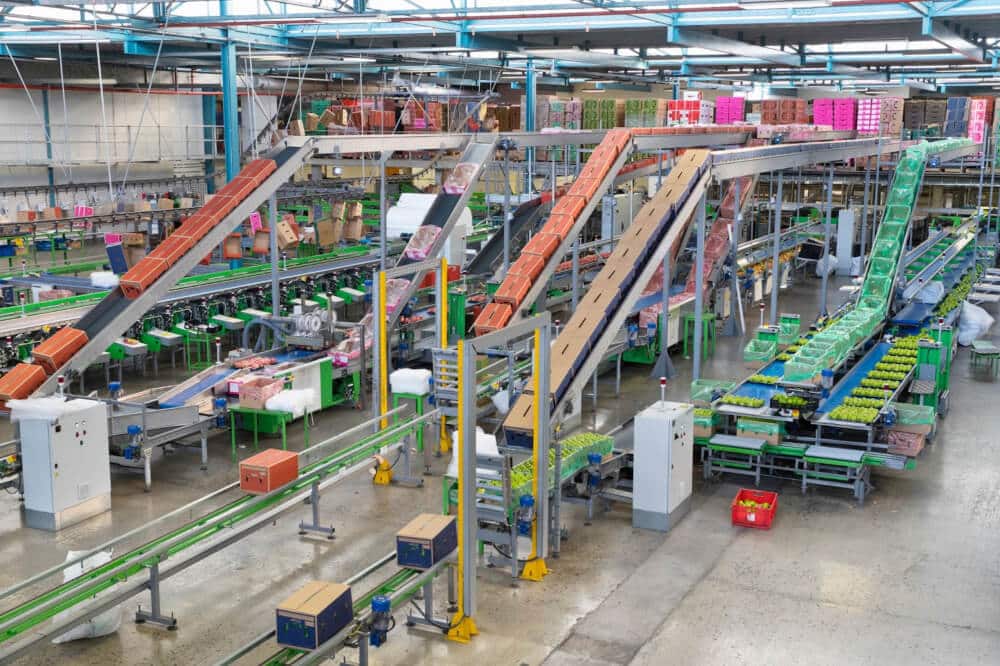In the steadily developing scenario of present-day warehousing, where accuracy and speed are foremost, automated conveyors have arisen as essential tools, changing the dynamics of the supply chain.
These high-level automated systems revolutionize the development, arranging, and assortment of products inside warehouses, offering a range of advantages that propel functional productivity and efficiency to new heights. By automating material transport and eliminating manual work, these conveyors make a smooth workflow, guaranteeing a persistent and efficient chain supply.
In this article, we dive into the essential role played by automated conveyors, disentangling seven key benefits that redefine the manner in which warehouses function and, at last, situating them at the very front of contemporary planned solutions.
1. Streamlined Material Handling Processes
Automated conveyors redefine material handling processes in present-day warehouses, bringing a shift in efficiency. By automating the movement of products, these systems eliminate the requirement for manual transportation, diminishing the risk of blunders and increasing overall operational speed.
The conveyor flawlessly moves merchandise between different warehouse regions, cultivating a fluid supply chain that limits bottlenecks. This functional effectiveness improves efficiency as well as guarantees that inventory is moved quickly and precisely.
Therefore, the outcome is a dynamic and responsive warehouse climate, establishing the groundwork for ensuing benefits that push warehouses into the fate of logistics.
2. Increased Efficiency and Throughput
In the present warehouses, automated conveyors are the main force behind expanded efficiency and proficiency. These systems amplify asset use and diminish free time by running constantly and relentlessly.
Warehouse efficiency increases decisively when an enormous volume of things is dealt with within a more limited measure of time, thanks to the automation of transportation and arranging methodology. By increasing throughput, warehouses are better equipped to respond quickly to changes in the market while also meeting the needs of fast-paced logistics.
Automated conveyors are fundamental parts of the advanced warehouse ecosystem due to their capability to deal with more noteworthy volumes of items with more productivity, which thus increments the complete working limit.
3. Enhanced Accuracy and Order Fulfillment
Another era of accuracy and precision in warehouse tasks, particularly in the area of order satisfaction, is ushered via automated conveyors. These conveyors, which are equipped with state-of-the-art sensors and control systems, closely monitor and oversee stock, enormously bringing down the chances of picking and bundling mistakes.
As a result, order precision significantly improves, which raises client happiness. Warehouses boost their reliability and client-driven approach in the relentless universe of contemporary logistics by automating the handling and arranging of products to ensure that legitimate items are continually picked and sent on time.
4. Cost Savings and Labor Optimization
Automated conveyors play a crucial part in accomplishing cost reserve funds and streamlining work assets within current warehouses. By limiting the dependence on physical work, these systems add to significant expense decreases while improving functional productivity at the same time.
Warehouses can decisively redistribute their labor force to more complex and value-added undertakings, augmenting the overall proficiency of the labor force. Past expense reserve funds and the decrease in manual material handling likewise mitigate the risk of working environment wounds, cultivating a more secure and safer workspace.
Hence, these conveyors stand as a critical driver in the development of warehouses towards smoothed-out, financially savvy, and more secure functional practices.
5. Flexibility and Versatility
Present-day warehouses benefit extraordinarily from automation’s expanded versatility and adaptability, which is fundamental for responding to changing consumer needs and company extension. Conveyors that are automated empower warehouses to develop and adjust tasks quickly to satisfy evolving needs.
These systems offer a versatile arrangement, whether they are utilized to accommodate a more significant product selection or more warehouse space. Warehouses can stay adaptable and responsive in view of the adaptability, which ensures smooth activities even with evolving necessities.
Automated conveyors, with their quick adaptability and reconfiguration abilities, are essential resources for safeguarding efficiency and competitiveness in the dynamic world of contemporary logistics.
6. Real-time Monitoring and Data Insights
Smart monitoring systems on automated conveyors offer continuous bits of information about warehouse operations. This broad informational collection contains significant details on inventory levels, hardware performance, and transportation status.
Warehouse chiefs are more prepared to identify regions for development, make informed decisions, and quickly execute strategic changes when they approach such real-time data. Constant checking and investigation of functional information further develops decision-making, functional permeability, and productivity.
By utilizing these bits of knowledge, warehouses can stay ahead of the curve in the ever-changing world of contemporary strategies by proactively resolving issues, smoothing out work processes, and ceaselessly working on their tasks.
7. Improved Warehouse Safety
Coordinated operations managers put high importance on warehouse safety, which is significantly improved via automated conveyors. These technologies decrease the chance of disasters and wounds associated with human work via automating repetitive and physically taxing activities.
The overall well-being profile of automated conveyor systems is further developed by the upgraded security highlights, for example, crisis stop instruments and sensors. Laborers might work in a setting that significantly brings down the gamble of setbacks, establishing a more secure workplace.
Consequently, in the fast-paced world of contemporary strategies, automated conveyors work on functional effectiveness as well as give warehouse representatives’ well-being a priority, encouraging a protected and safe workplace.
Bottomline
The adoption of automated conveyors in modern warehouses achieves a transformative impact on functional proficiency, efficiency, and security. As the operations business keeps on developing, the integration of these high-level systems is progressively fundamental for remaining competitive.
The advantages of smoothed-out material handling, expanded throughput, cost reserve funds, and further developed security, all in all, add to making a more agile, responsive, and productive warehouse environment.

